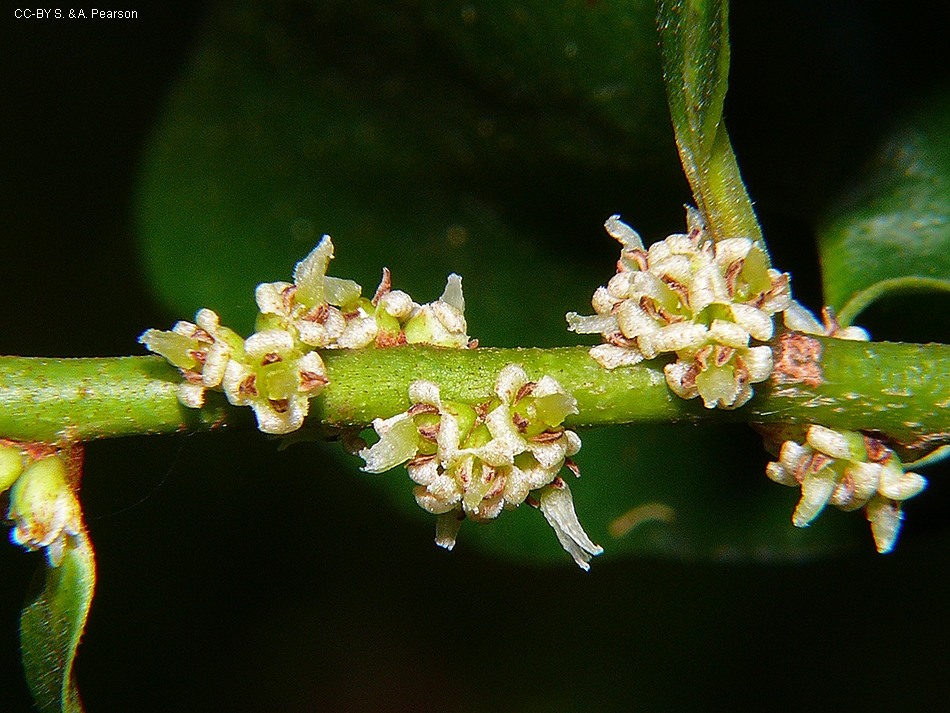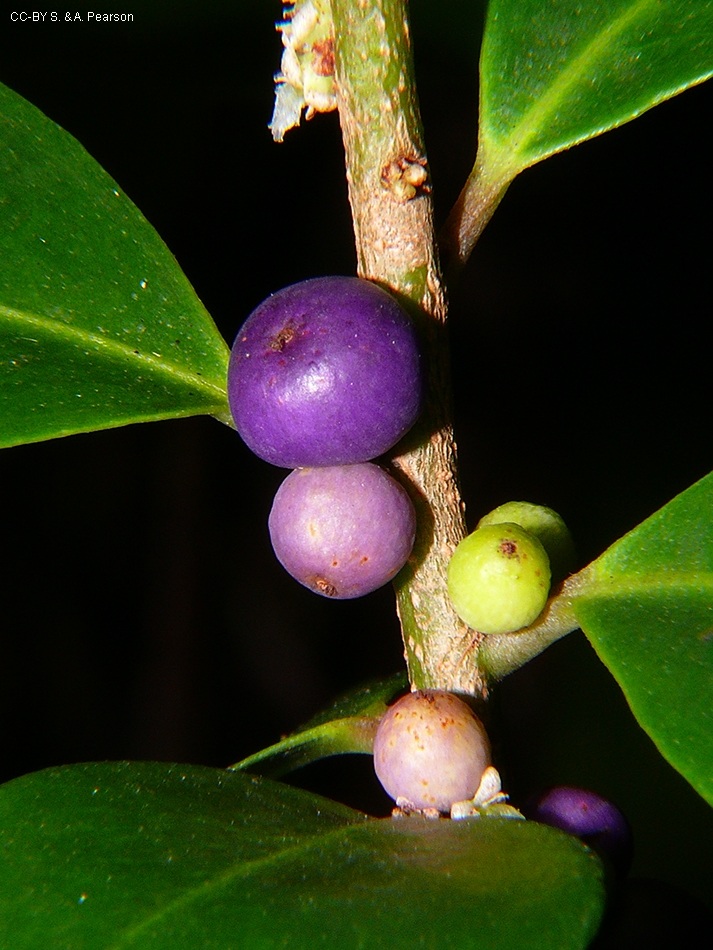Australian Tropical Rainforest Plants - Online edition
Myrsine crassifolia R.Br.




Brown, R. (1810), Prodromus Florae Novae Hollandiae: 534.Type Australian East Coast, R. Brown [1802-1805] [Bennett No. 2820](holo: BM; photo BRI iso: K, MEL) fide Jackes, B. Aust. Syst. Bot. 18 (5), (2005).
Leaves simple, alternate. Stipules absent. Petiole 0.2-0.7 cm long, purplish to dark pink. Leaf blade elliptic to obovate, weakly asymmetrical, 3-12 cm long, .5-3.5 cm wide, base cuneate, margin entire, flat to slightly revolute and weakly undulate, apex obtuse. Midrib slightly raised on upper surface, prominently raised below, lateral veins 9-14 on each side of midrib. Lamina with orange-red irregularly shaped and elongated or lineate transparent streaks towards base of lamina. Glabrous except for occasional scales near base.
Inflorescence axillary and ramiflorous, of 3-5 flowers in fascicles along branches between and below leaves. Plants dioecious. Flowers unisexual, although can appear bisexual with antherodes (staminodes with only sterile anthers present) well developed except for the absence of pollen; ± sessile on peduncles 1-2 mm long. Flowers 4-merous, actinomorphic, calyx cup-shaped, c. 1 mm long, orange-red glands and glandular hairs present; corolla tubular, up to 2 mm long, greenish cream, reflexed after anthesis; globular to lineate glands present. Male flowers with 4 stamens, inserted towards base of tube and a reduced gynoecium. Female flowers with 4 antherodes about 0.6 mm long, filaments very short to absent, attached to corolla opposite lobes and at base of tube. Ovary superior, about 1 mm long, unilocular, with 4 ovules embedded in central placental mass. Stigma short and stout, 2-4 lobed.
Seedlings not seen.
This profile information and associated coding has been adapted from Jackes (2005) and Harden et al. (2014).





